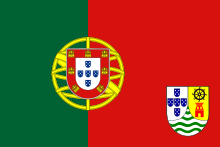Language/Indo-portuguese/Grammar/Adjectives
Hi Indo-Portuguese learners! 😊
In this lesson, we will dive into the world of adjectives in Indo-Portuguese!
Once you've mastered this lesson, take a look at these related pages: Conditional Mood, Plurals & Give your Opinion.
Adjectives in Indo-Portuguese[edit | edit source]
Adjectives are an essential part of any language, and they are no different in Indo-Portuguese. Adjectives are used to describe nouns, indicating qualities such as color, size, shape, and so on.
In Indo-Portuguese, adjectives generally follow the noun they modify. For example:
- A casa branca (the white house)
- O cachorro grande (the big dog)
However, in some cases, the adjective can be placed before the noun. For instance, if the adjective is used to express a subjective idea or to give emphasis, it is placed before the noun.
Let's see some examples of adjectives placed before the noun:
| Indo-Portuguese | Pronunciation | English |
|---|---|---|
| o lindo barco | o LIND-oo BAR-koo | the beautiful boat |
| a triste história | a TCHIS-ti his-STO-ri-ya | the sad story |
| um delicioso bolo | oo deli-SYO-zoo BO-loo | the delicious cake |
As you can see from the examples above, the adjective must agree in gender and number with the noun it modifies.
Gender and Number Agreement[edit | edit source]
One of the essential aspects of adjectives in Indo-Portuguese is agreement, both in gender and number. This means that adjectives must match the noun they describe in gender and number.
For example, if the noun is feminine, the adjective must also be in the feminine form. If the noun is plural, the adjective must be plural as well.
Let's take a look at some examples to understand this better:
| Indo-Portuguese | Pronunciation | English |
|---|---|---|
| a casa branca | a KAH-za BRAN-ka | the white house (feminine singular) |
| os carros brancos | os KA-roos BRAN-kos | the white cars (masculine plural) |
| as maçãs vermelhas | as ma-SAN-yas ver-ME-lyas | the red apples (feminine plural) |
| o livro vermelho | o LEE-vro ver-ME-lyoo | the red book (masculine singular) |
Notice how the adjective 'branca' agrees in gender and number with the feminine noun 'casa,' and the adjective 'vermelhas' matches the feminine plural noun 'maçãs,' while the adjective 'vermelho' agrees in gender and number with the masculine singular noun 'livro.'
Irregular Adjectives[edit | edit source]
Like every other language, Indo-Portuguese has its fair share of irregular adjectives. While most adjectives follow the general rules of agreement, some have alternate forms. Here are some examples:
| Indo-Portuguese | Pronunciation | English |
|---|---|---|
| bom | bom | good |
| má | MAH | bad |
| grande | GRAN-di | big |
| pequeno | pi-KEN-oo | small |
| velho | VEL-yoo | old |
| novo | NO-voo | new |
It's essential to memorize the fundamental adjectives and their irregular forms to use them correctly.
Adjectives in Dialogue[edit | edit source]
Now that we understand the basics let's see how adjectives can be used in a dialogue.
- Person 1: O meu namorado é __lindo__! (My boyfriend is beautiful!)
- Person 2: Que legal! O meu também é __lindo__! (That's great! Mine is beautiful too!)
As you can see from the example above, the adjective 'lindo' is used to describe the person's boyfriend. It is essential in a conversation to use the correct adjective agreement to convey the intended meaning.
Practice Exercise[edit | edit source]
Now that you know the basics let's practice with a few exercises. Choose the correct adjective to agree with the noun.
1. O meu gato é __bonito___. (My cat is pretty.) 2. A menina tem os olhos __azuis___. (The girl has blue eyes.) 3. As plantas são __verdes___. (The plants are green.) 4. A casa é __amarelo___. (The house is yellow.) 5. O rapaz é __alto___. (The boy is tall.)
Answers: 1. bonito, 2. azuis, 3. verdes, 4. amarela, 5. alto.
Don't forget to practice with native speakers on Polyglot Club. Find native speakers and ask them any questions!
Final Thoughts[edit | edit source]
In this lesson, we learned about adjectives and their usage in Indo-Portuguese. Remember that getting used to adjectives' agreement takes time and practice, but it is vital for effective communication. Keep practicing and exploring more about the Indo-Portuguese language and grammar rules to become proficient.
➡ If you have any questions, please ask them in the comments section below.
➡ Feel free to edit this wiki page if you think it can be improved. 😎

